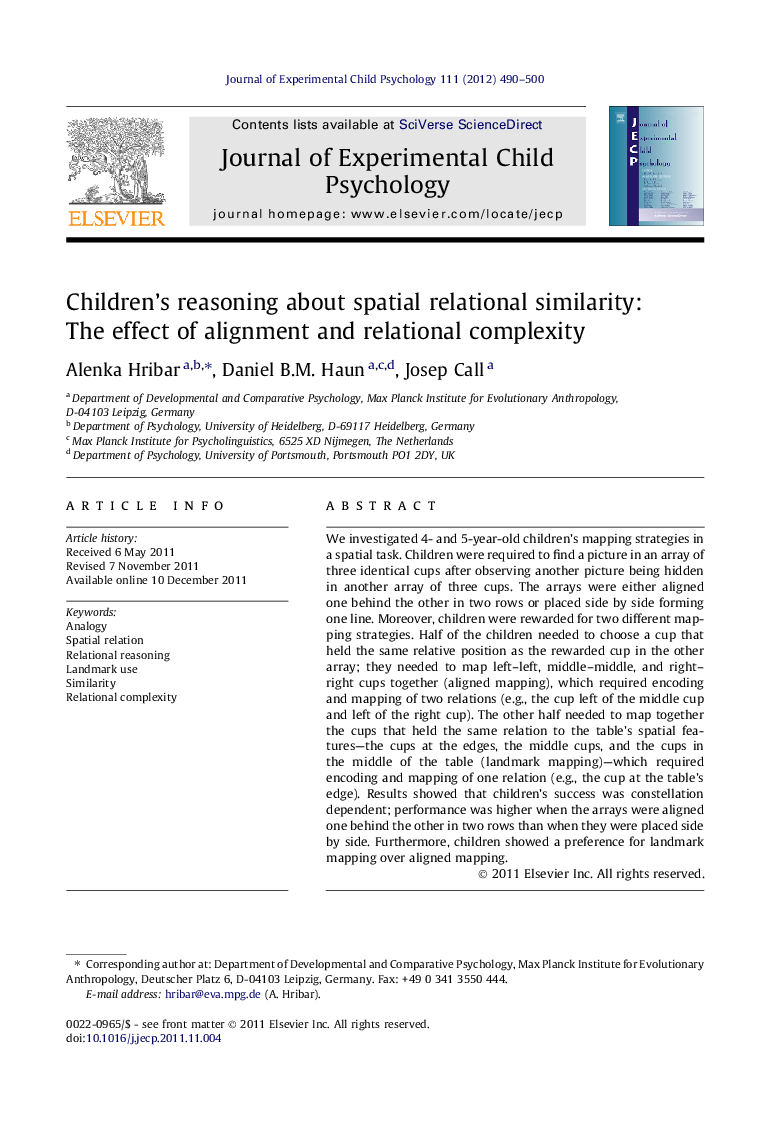| کد مقاله | کد نشریه | سال انتشار | مقاله انگلیسی | نسخه تمام متن |
|---|---|---|---|---|
| 918245 | 919465 | 2012 | 11 صفحه PDF | دانلود رایگان |

We investigated 4- and 5-year-old children’s mapping strategies in a spatial task. Children were required to find a picture in an array of three identical cups after observing another picture being hidden in another array of three cups. The arrays were either aligned one behind the other in two rows or placed side by side forming one line. Moreover, children were rewarded for two different mapping strategies. Half of the children needed to choose a cup that held the same relative position as the rewarded cup in the other array; they needed to map left–left, middle–middle, and right–right cups together (aligned mapping), which required encoding and mapping of two relations (e.g., the cup left of the middle cup and left of the right cup). The other half needed to map together the cups that held the same relation to the table’s spatial features—the cups at the edges, the middle cups, and the cups in the middle of the table (landmark mapping)—which required encoding and mapping of one relation (e.g., the cup at the table’s edge). Results showed that children’s success was constellation dependent; performance was higher when the arrays were aligned one behind the other in two rows than when they were placed side by side. Furthermore, children showed a preference for landmark mapping over aligned mapping.
► Children needed to map spatial relations from base to target array.
► Mapping success was constellation and relation dependent.
► Experience with aligned constellation did not increase performance on non-aligned constellation.
► Children’s performance was similar to great apes’ performance from previous studies.
Journal: Journal of Experimental Child Psychology - Volume 111, Issue 3, March 2012, Pages 490–500